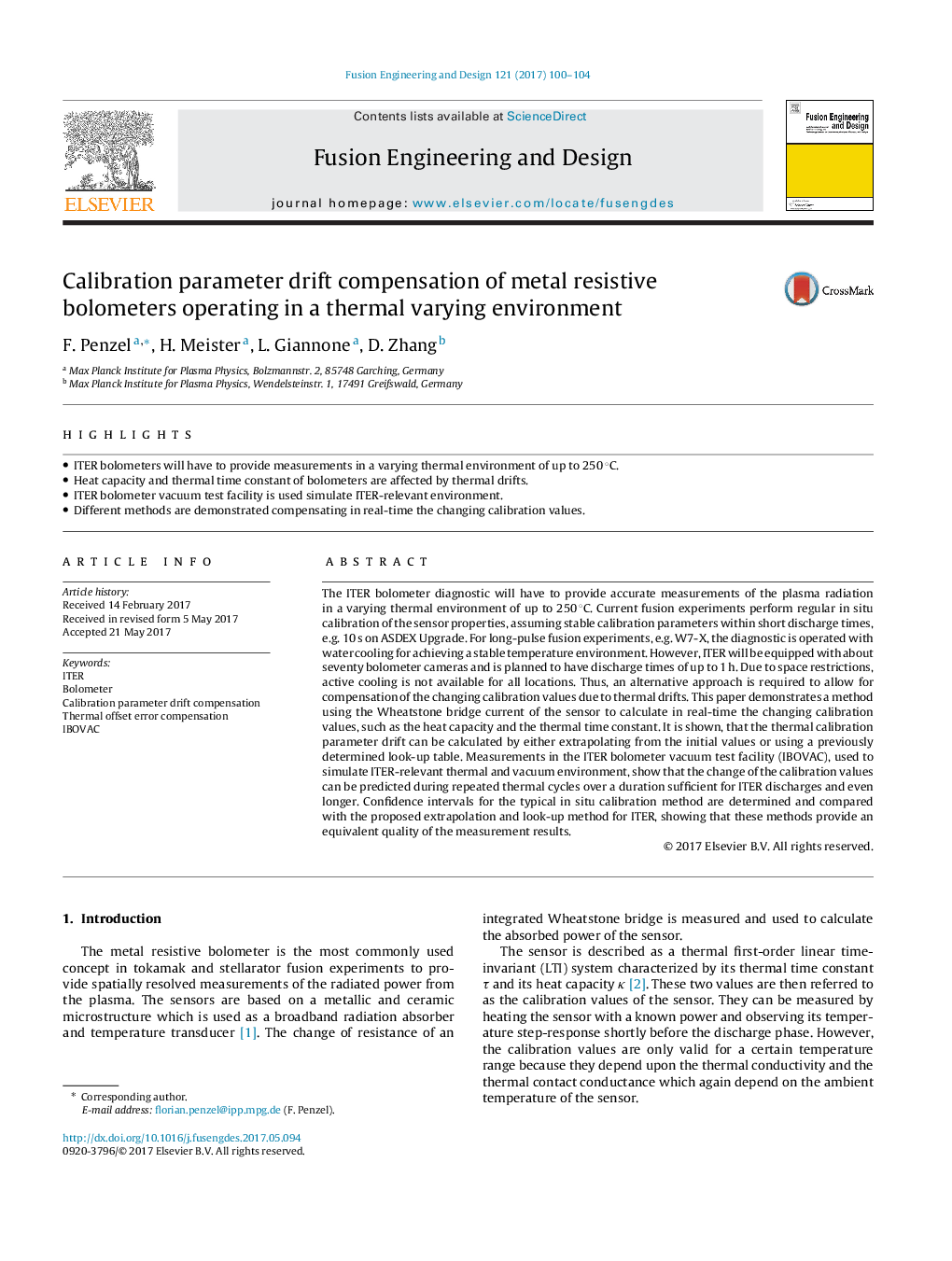| Article ID | Journal | Published Year | Pages | File Type |
|---|---|---|---|---|
| 4921047 | Fusion Engineering and Design | 2017 | 5 Pages |
Abstract
The ITER bolometer diagnostic will have to provide accurate measurements of the plasma radiation in a varying thermal environment of up to 250 °C. Current fusion experiments perform regular in situ calibration of the sensor properties, assuming stable calibration parameters within short discharge times, e.g. 10 s on ASDEX Upgrade. For long-pulse fusion experiments, e.g. W7-X, the diagnostic is operated with water cooling for achieving a stable temperature environment. However, ITER will be equipped with about seventy bolometer cameras and is planned to have discharge times of up to 1 h. Due to space restrictions, active cooling is not available for all locations. Thus, an alternative approach is required to allow for compensation of the changing calibration values due to thermal drifts. This paper demonstrates a method using the Wheatstone bridge current of the sensor to calculate in real-time the changing calibration values, such as the heat capacity and the thermal time constant. It is shown, that the thermal calibration parameter drift can be calculated by either extrapolating from the initial values or using a previously determined look-up table. Measurements in the ITER bolometer vacuum test facility (IBOVAC), used to simulate ITER-relevant thermal and vacuum environment, show that the change of the calibration values can be predicted during repeated thermal cycles over a duration sufficient for ITER discharges and even longer. Confidence intervals for the typical in situ calibration method are determined and compared with the proposed extrapolation and look-up method for ITER, showing that these methods provide an equivalent quality of the measurement results.
Related Topics
Physical Sciences and Engineering
Energy
Energy Engineering and Power Technology
Authors
F. Penzel, H. Meister, L. Giannone, D. Zhang,
